Review: Robots Take Over the Stage in H2O REBORN RUPAKA
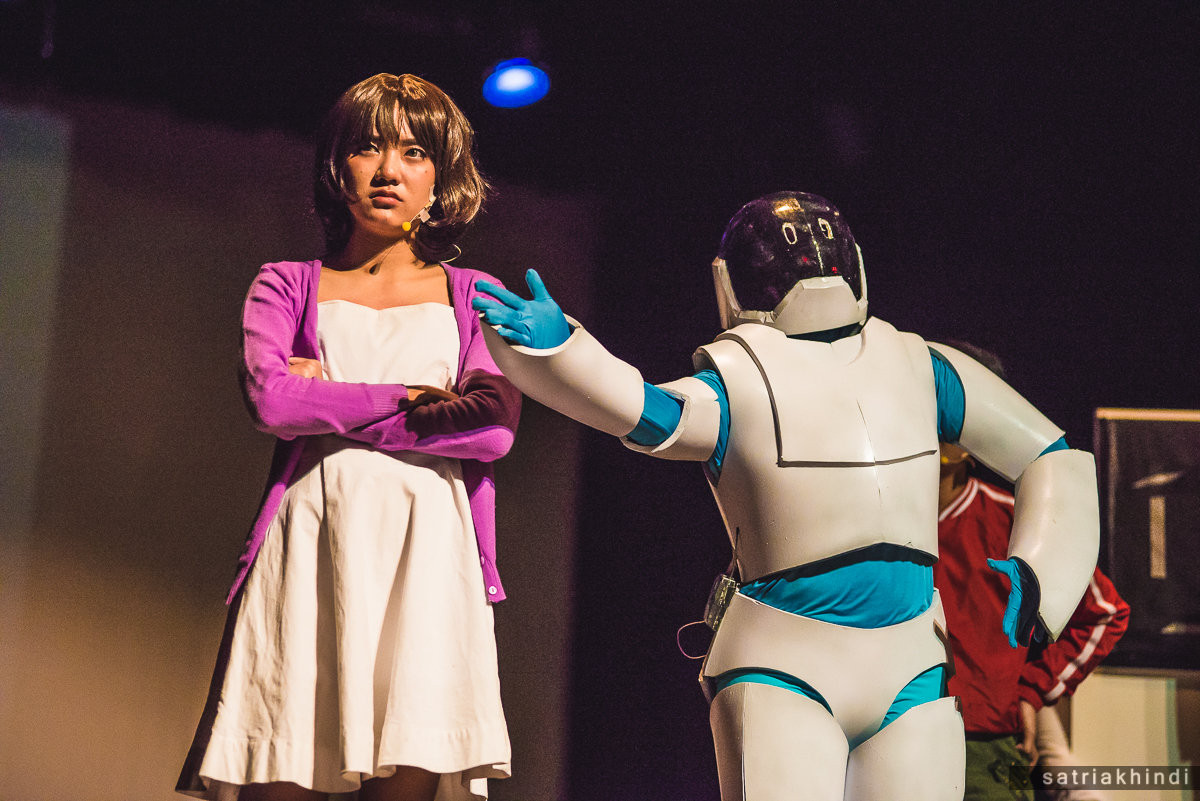
Cheers and boos from the raucous crowd filled Burhanuddin Stadium. BIG RIG, a stubby robot clad in yellow, threw a hefty punch at B-BOP. The latter, a three-headed robotic monstrosity, easily parried the attack. Its looming build countered with a direct hit at its opponent, smashing it against the rink. Rajit, B-BOP's owner and controller, whooped in victory.
The scene must have looked and felt familiar to fans of H2O Reborn, a science-fiction comic by Indonesian artist Sweta Kartika with original concept by Pandji Pragiwaksono & Shani Budi Pandita. Its three beautifully illustrated volumes, published by Koloni and Kolom Komik, have left its oil-stained mark on the Indonesian comic scene since 2015.
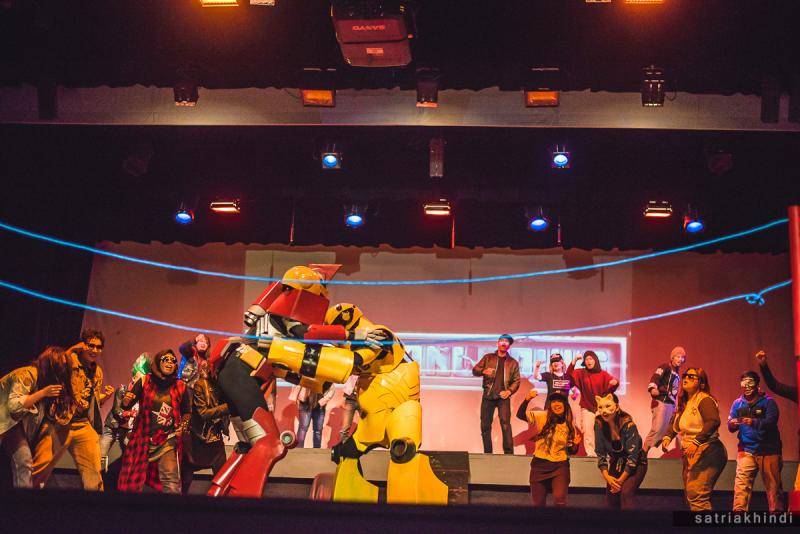
The theatrical adaptation, titled H2O Reborn Rupaka (Rupaka is a Sanskrit world meaning form or spectacle), had three shows in total - a matinee and an evening show on Saturday (10/2), and a closing matinee on Sunday (11/2).
A Humanist Sci-Fi Story
The script adapts the first two books of H2O Reborn, kicking things off by introducing a world populated by robots living alongside humans and contributing to the society - assuming the role of security guards, nannies, even underground fighters as fighting bots - following their preprogrammed protocol. The greatest of them all was Ravana, an A.I. invented by Professor Laksmana. The bodiless bot serves as the overseer and peacekeeper of all of Earth.
Disturbance came to this peaceful equilibrium when Professor Rama, a brilliant inventor, created a robot he named Hans. He was the result of Rama's attempt in pursuing a breakthrough in the field of robotics: a robot with the ability to evolve beyond its protocol. Rama then sent Hans to his visually impaired daughter, Sita, to test his capabilities. It was also a token of peace, as he could not come home often due to his work.
Yet Sita was never fond of robots, seeing them as no more than cold, programmed pieces of junk that took too much of her only remaining parent's time and attention. Thus she rejected the overly friendly robot without any hesitation. Undeterred, Hans insistently nagged at her, offering his friendship. The annoyed Sita finally issued a challenge: she'll be friends with Hans if he could finish the song she had been writing.

He sat down before the piano. White metallic fingers danced on the ivory, playing Sita's unfinished melody followed by a barely discernible pause. Then Hans pushed forward, adding more and more notes. Soon, Hans completed the song, impressing Sita and her only friend and techie Angga.
Turns out, Ravana had been monitoring the little scene. He saw Hans' unprecedented self-learning protocol as a threat to his crown as the most sophisticated AI in the world. He began to formulate a plan to uphold the status quo...
Just like the source it was adapted from, H2O Reborn Rupaka's is a humanist and intimate story taking place in a futuristic science-fiction setting. Themes such as loss, longing, friendship amidst differences, and finding the defending one's sense of self, are timeless and presented in a way that make them suitable for all ages.
Rising from the Page to the Stage
Teater Pesawat Kertas' adaptation of comic books into a musical book was a considerable success. The story was not only easy to digest for those who have never even heard of the comic but would also please even the most hardcore fans. The pacing was impeccable, never leaving the audience with a dull moment nor an undeveloped character. The payoff with the confrontation against Ravana in the end was as well-earned as it was satisfying.
The Broadway-inspired format added a new layer to the story: music and acting (as well as some perfunctory dancing).
H2O Reborn comic was initially published with an original music CD. It was proof of how the writer had thoughtfully devised accompanying pieces of music to complement the world he built. It was therefore no big surprise that the many songs (written by Aldair Zerista and Kunto) were finely attuned to the scene playing out on stage. Let's take the first song, for example. It was a fist-pumping crowd song sung by, well, the crowd of spectators hyping up the upcoming match between B-BOP and BIG RIG. The owner of the competing robots joined in, building up the heat even more and really getting you into the mood for some very illegal robot brawl.
My personal favorite is the duet sung by Sita and Professor Rama. It started with Sita, lonely at her home despite the robotic companions his father left for him, playing the piano somberly and sing a simple melody about her missing her father who was always away for work. In the middle of the song, it became a distant counterpoint duet as Rama joined in in a limbo, telling just how much he regretted his inability to be at her daughter's side. It was heartbreakingly beautiful.
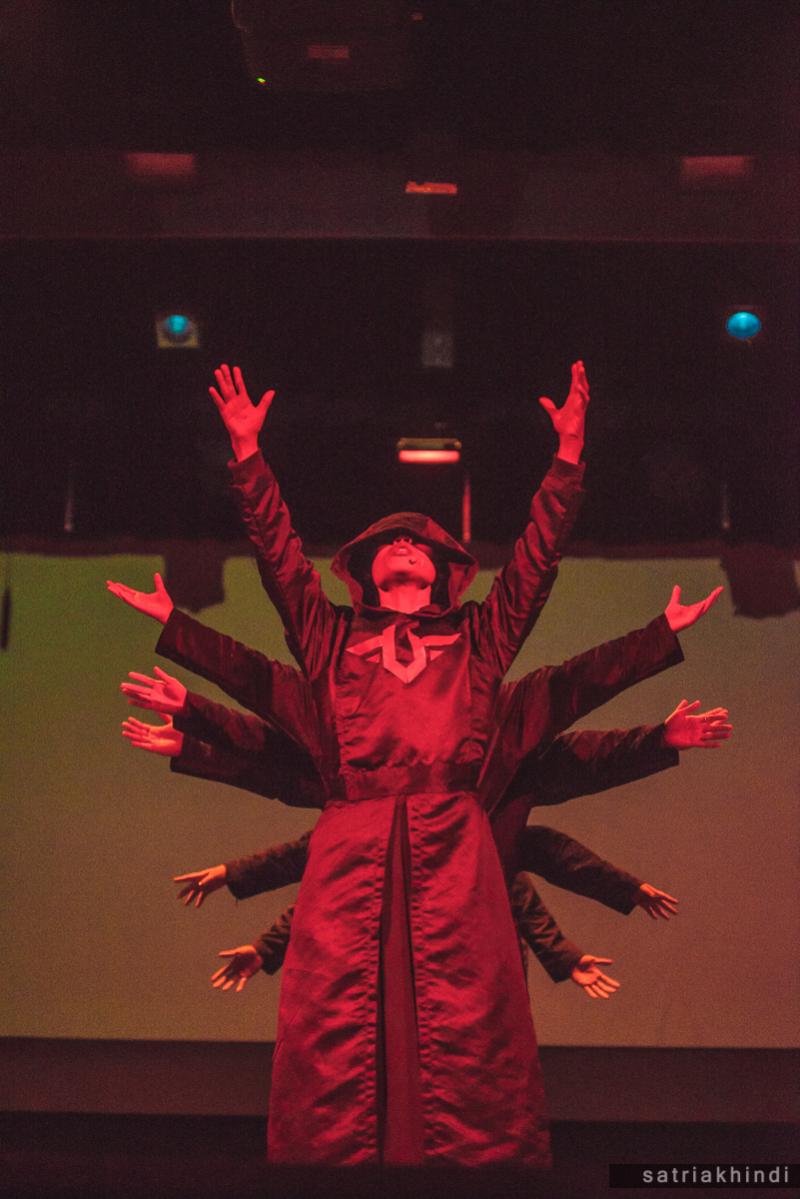
Ravana, like any good villain should, had a few songs dedicated to build his personality. Well, personalities. All ten of them. Yes, he had ten different personalities (which were never elaborated on in the original story) with their own quirks - one cowered at anything; another was very stereotypically flamboyant; and so on. Most parts of his songs were sung by the 'main' personality, a prideful yet immature figure holding a lofty ambition to stay as humanity's greatest creation-turned-god.
Dance choreography was not the production's strongest suit though thankfully it did not distract from the songs either. There was no dance numbers, nor particularly showy moves. What it did have were fight scenes, well-designed and finely executed by the actors, even by those trapped in the robot suits. Each fight scene was intense, both the evenly matched one-on-one duels, and the chaotic brawls.
Man? Robot? Fret not!
As for the actors, all the main characters portrayed their roles really well. Sita, played by the local idol Rachel Florencia really was a believable tween, both petulant and sweetly innocent. Her voice was charming but sometimes hard to hear, likely due to imperfect control of the microphone. Yulia Sari Riyanti played Angga, the sole human friend of Sita's. She shone in this cross-cast role, having near-perfect mischievous and boyish vocal tone and body language.
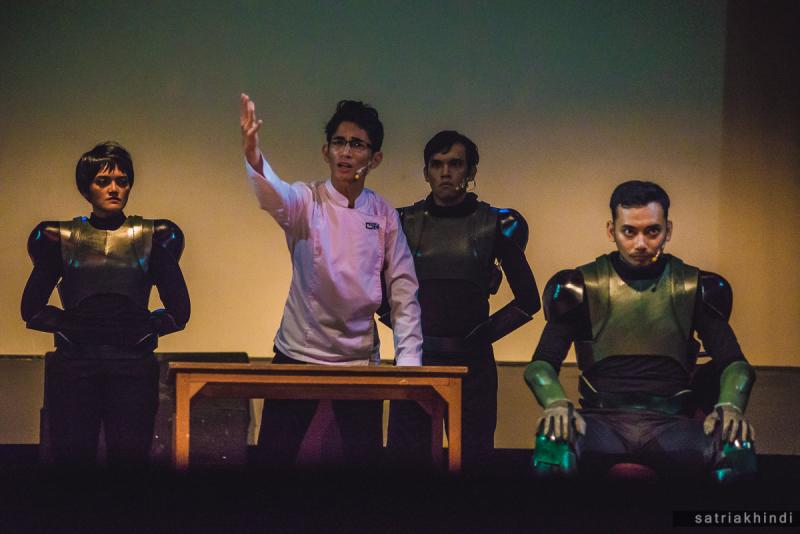
Kurniawan Wahyu Illahi acted the role of Professor Laksamana neatly, his wizened charisma and intellect hitting the right notes. Professor Rama as portrayed by Yusuf A. had my favorite voice out of the male cast, but there was much to be desired from his awkwardly delivered lines. It was understandable to some extent, as this role had the heaviest emotional moments.
Another duo in this play consist of Drupadi (Risma Megawati), a security officer who lost her partner robot early in the play, and Rajit (Aldiyansah Prambudi), a small time thug with a secret talent for modifying robots. Risma excelled in showing the development of her character from a lawful officer, to an anguished and lost woman, and finally to someone seeking justice in her own way. The progression felt real. Aldiyansah was perhaps the audience's favorite, as his character was the designated comic relief that brought much-needed levity to the story. His exaggerated expressions and movements were a joy to watch.
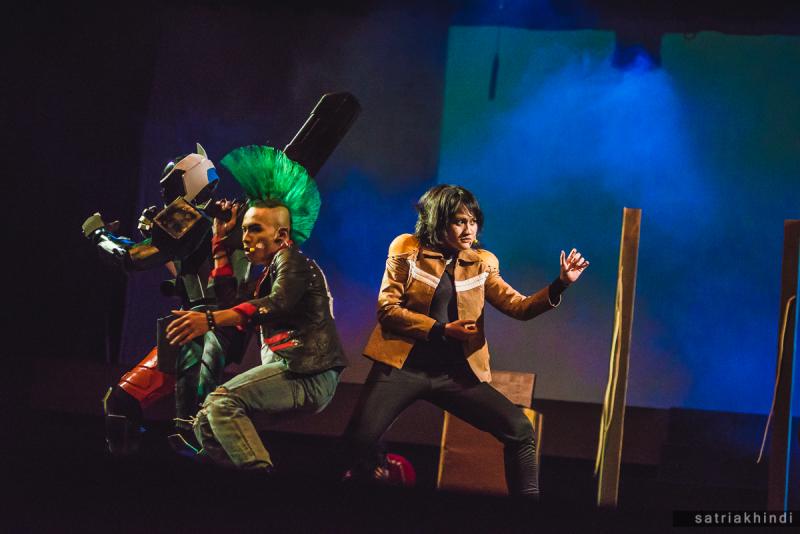
No story is complete without an antagonist. Ravana, whose main personality was assumed by Randa Arkie Primawa, was a challenging role. Randa had to become an AI who was contradictorily rational and calculating as expected of a machine yet also held a human streak of jealousy and ambition. Randa committed to the role, commanding the scenes he was in. Lest we forget about the other nine personalities (though, individually and perhaps unavoidably, very one-note) who represented Ravana's internal conflicts through their interactions and quips. The one that stood out in particular was a personality played by Yolanda Cenderakasih, enigmatically always moving her hands mesmerizingly in a manner reminiscent of Javanese dancers and speaking in a singsong voice, making her very easy to spot between the identically robed personalities. Another one that brought considerable amount of humor to Ravana's emotionally draining scenes was Dhimas Aryadi Redi, becoming an over-the-top flamboyant personality.
The actors playing the robots deserve nothing but the utmost admiration and appreciation for surviving the motion-, vision-, and perspiration- limiting costumes. They were at the heart of the play and the stepped up to the challenge. Each robot moved in a distinct way (B-BOP and BIG RIG are more classically robotic with limited range of movement, while Hans is very humanlike). Hans' actress was very adorable and endearing in portraying the robot's efforts to be accepted by Sita.
Praises not only go to the cast (including the supporting cast and ensemble) but to the casting director as well, who put together select members with strict height and voice restrictions to perfectly convey the characters of H2O Reborn. And, of course, credit goes to Indra Nugraha as the director, who united the cast into a wholly cohesive form of the show.
Technical Aspects That Need Fine-Tuning
Other aspects to look out for include lighting, set, and costume design. All work in harmony to bring Indra's vision to life. It was unmistakably challenging to bring forth a futuristic world depicted by Sweta Kartika to the stage, but I believe the minimalist approach to the set (with only few simple set-pieces) was more effective in engaging the audience's imagination than if the production had opted for half-baked sets.
The character designs, staying mostly true to the comic's designs, were familiar enough for the contemporary audience yet with style choices that set it slightly into the future. Rajit's Mohawk hairdo and all-out punk outfit was the most memorable wardrobe.
It was very unfortunate that there were many technical issues happening throughout the show. These include microphones that stayed on and gave the audience a chance to listen to backstage chatters; microphones that stayed off and denied the audience the actor's lines; curtain that couldn't go down because of a set piece's placement; projector that switched off just a bit too slow; and even a piece of B-BOP's costume that fell off after a scene with a lot of movement. It was, however, understandable, for it was the first show and the crew hadn't got time to iron the kinks out.
Although the technical issues were distracting, overall the debut performance of Teater Pesawat Kertas was praiseworthy due to the thoughtfully tailored script, characters that felt real and were played with dedication, and catchy songs.
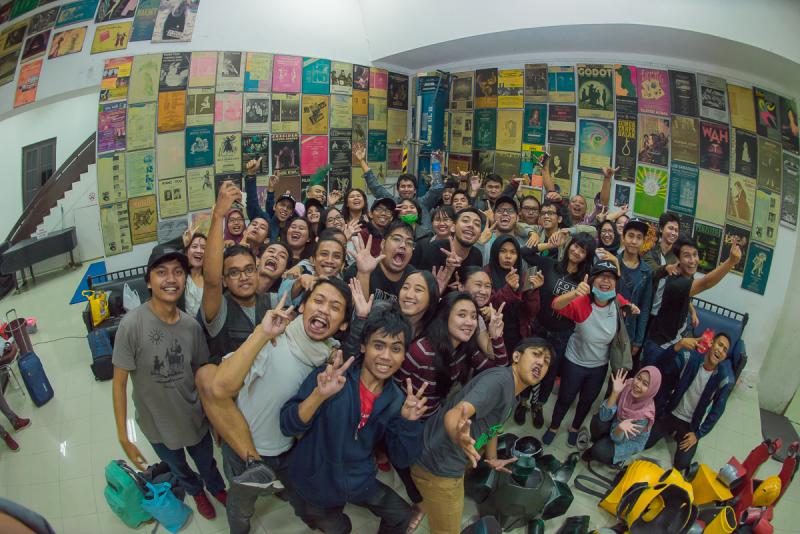
Teater Pesawat Kertas (Paper Plane Theatre) was founded very recently, on January 28th, 2017. It's championing a noble mission: adapting local comics to the theatre stage. As a fan and contributor of both forms of art, I'm looking forward to the next works of Teater Pesawat Kertas. It has been far too long that they go their own way. There are treasures waiting to be Discovered by the collaboration of theatre and comics. Such form of collaborative work can also introduce the comic geeks to theatre, and vice versa.
Just like Sita and Hans who at first seemed too different from each other but grew to reach a mutual understanding and became best friends, I believe musical theatre and comics can build upon one another and will together become stronger, more tolerant, and, ultimately, better.
Photo credit: Satria Khindi
Reader Reviews
Videos

